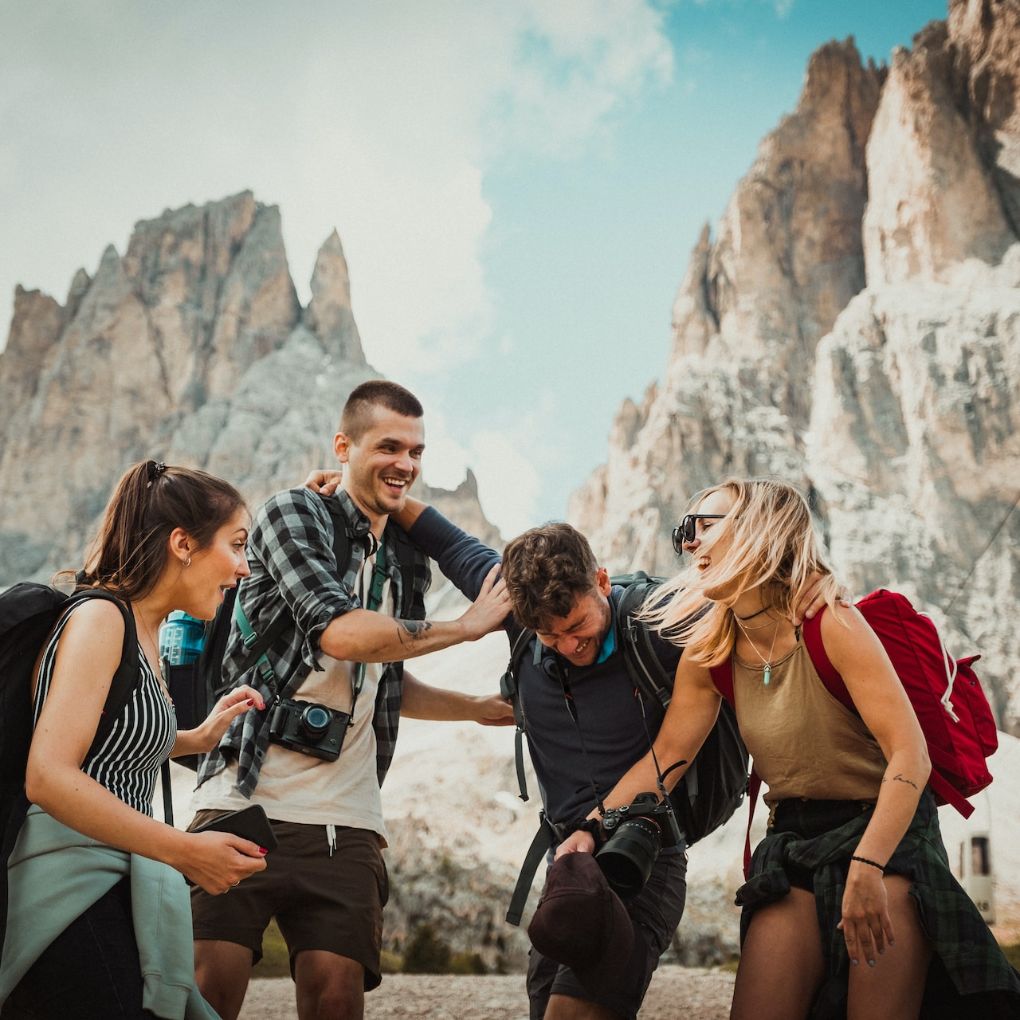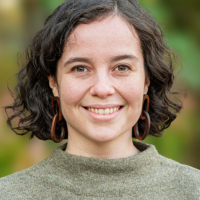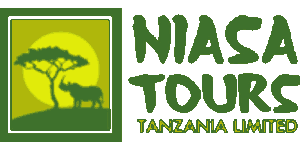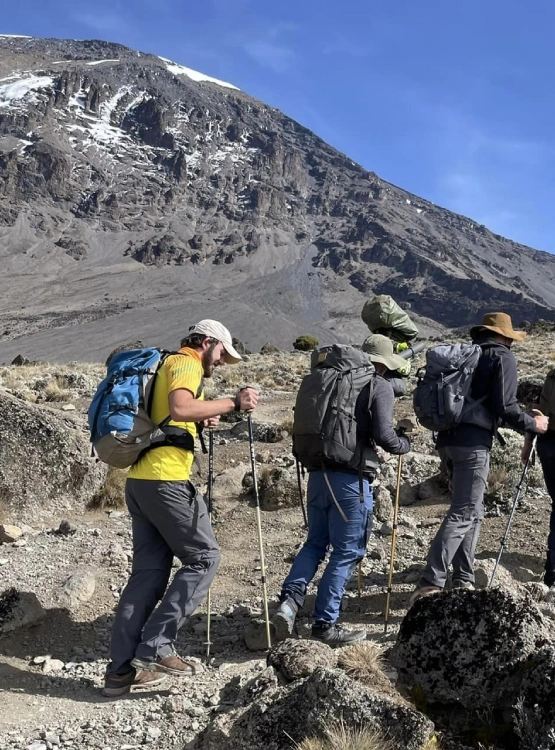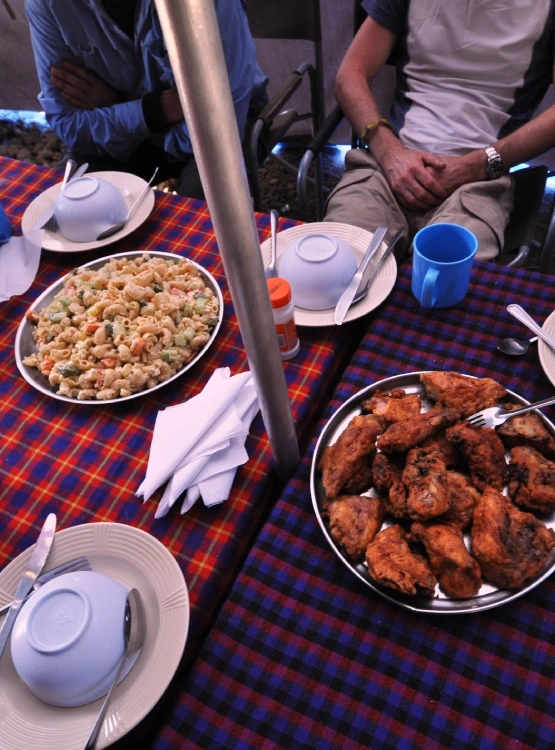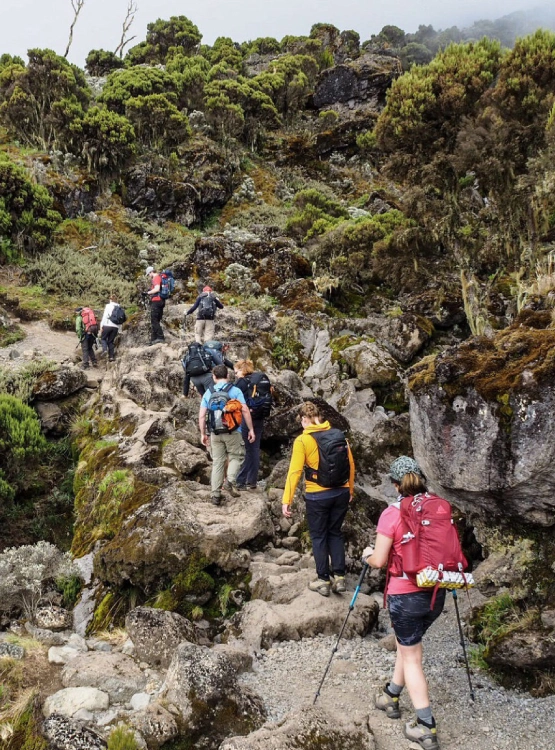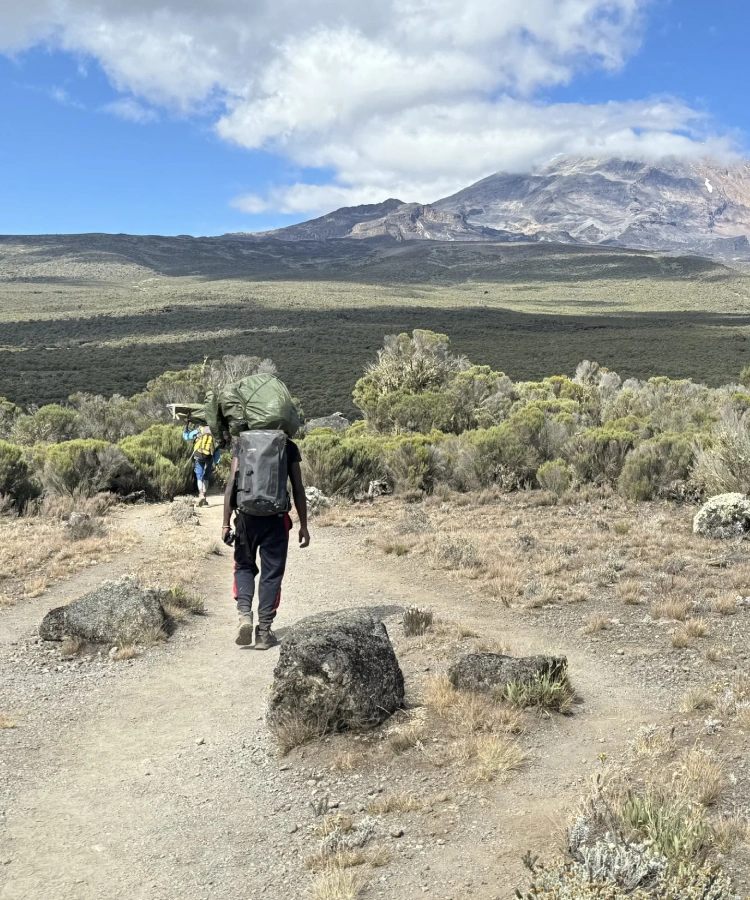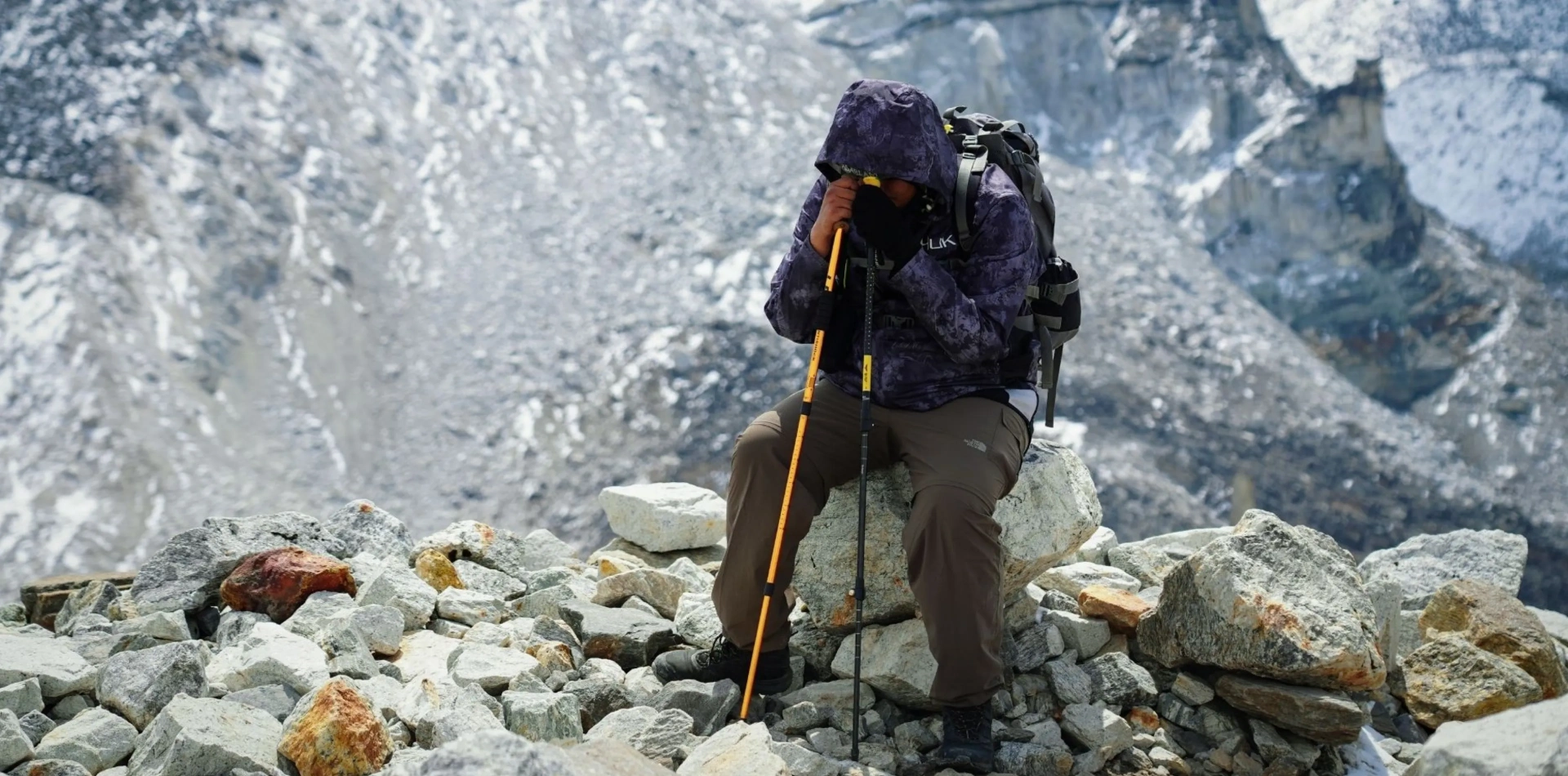
Kilimanjaro Altitude Sickness
Prepare For Kilimanjaro Altitude Sickness With Proper Precautions
Climbing Mount Kilimanjaro is a remarkable adventure, but it’s essential to understand and manage altitude sickness to ensure a safe and successful trek. As you ascend to higher elevations, the air thins, and your body has to adjust to lower oxygen levels. This can lead to symptoms like headaches, nausea, dizziness, and fatigue.
To minimize the risk, proper acclimatization is key. Our expert Kilimanjaro Guides will help you ascend gradually, giving your body the time it needs to adjust. Stay hydrated, eat well, and listen to your body—if you start feeling unwell, don’t hesitate to inform your guide.
It’s also vital to take rest days at higher altitudes to allow for acclimatization. By taking the right precautions and following expert advice, you can reduce the risk of Kilimanjaro Altitude Sickness and focus on enjoying the stunning landscapes and the rewarding journey to Kilimanjaro’s summit!
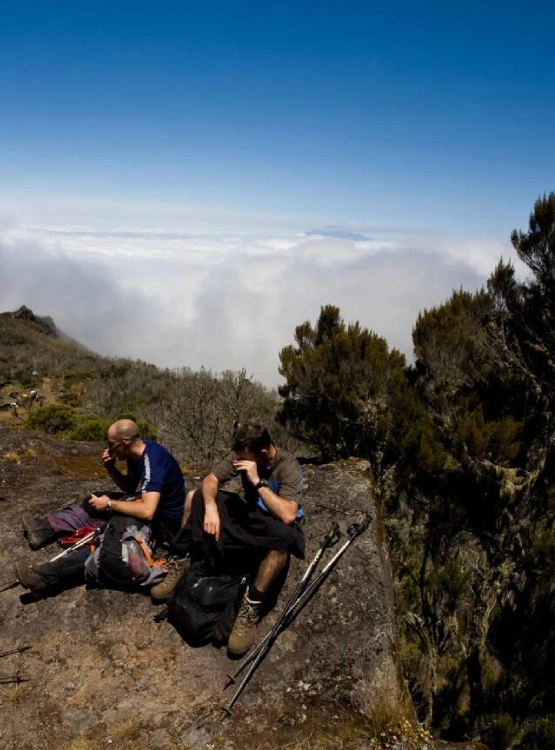
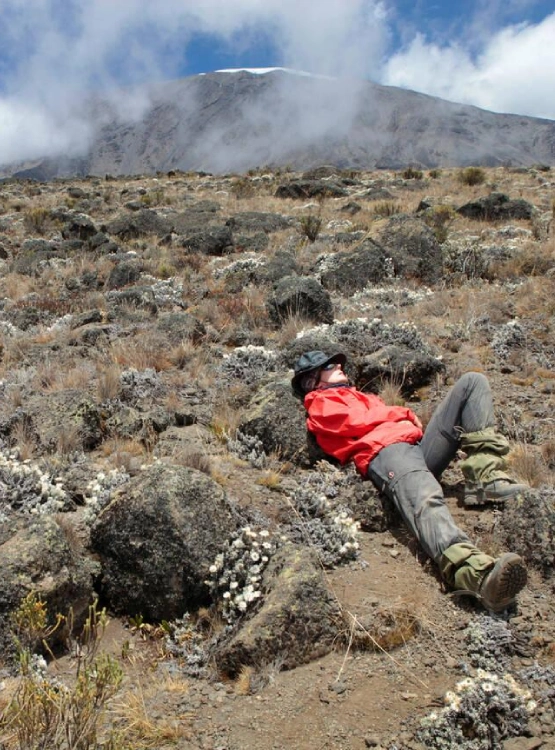
Stay Safe with Kilimanjaro Altitude Management
Ensure a safe Kilimanjaro Climb by managing altitude sickness effectively. Our expert guides will help you acclimatize, stay hydrated, and recognize symptoms early. Book your journey with us for a secure ascent!
Gradual Ascent
Climb Kilimanjaro at a steady pace, allowing your body to adjust to higher altitudes, reducing the risk of altitude sickness.
Proper Hydration
Stay hydrated throughout the climb to help prevent altitude sickness. Drink plenty of water and electrolyte-rich fluids to maintain balance.
Symptom Awareness
Be aware of early altitude sickness signs, such as headaches or nausea. Recognizing symptoms early helps prevent complications during your climb.
Expert Guidance
Our experienced guides provide constant support, offering advice on acclimatization, monitoring symptoms, and ensuring you’re always prepared for the next stage.
Let’s Explore and Experience
Let’s explore Tanzania together—where every journey is crafted with care, and every moment brings you closer to nature, culture, and adventure. From the Serengeti to Zanzibar, we’re here to guide your unforgettable experience with passion, warmth, and local expertise.
We make it easier for everyone to experience the world
Ready to explore Tanzania’s natural wonders? We’re here to help! Whether you’re planning a once-in-a-lifetime safari or a peaceful nature escape, our team makes travel easy and personal. Reach out today—let’s turn your dream of exploring Tanzania and beyond into reality. We make it easier for everyone to experience the world, one journey at a time. Contact us today!
Need I help? Talk to an Expert
+255767493713 +255690129757
Mountain Climbing FAQs
Discover essential information for climbing Tanzania’s iconic peaks—Mount Kilimanjaro, Mount Ol-Donyo Lengai, and Mount Meru. Learn about the best seasons, difficulty levels, required permits, gear recommendations, and safety tips. Whether you’re a first-time climber or experienced mountaineer, these FAQs provide guidance to help you prepare, stay safe, and make your mountain adventure unforgettable.
Climbing Kilimanjaro is challenging but achievable for fit individuals. It doesn't require technical skills, but altitude and endurance are key factors. Choosing a longer route improves acclimatization and success. Mental preparation, physical fitness, and proper gear make a big difference in your summit experience.
The best times are during dry seasons—January to March and June to October. These months offer clear skies, better trail conditions, and higher success rates. Avoid the rainy seasons for safety and comfort. Early booking is also advised due to route popularity.
Yes, Mount Meru is ideal for acclimatization before Kilimanjaro. It reaches 4,566 meters and offers great altitude training. The trek includes wildlife encounters and scenic ridges, preparing your body for Kilimanjaro’s higher elevation and reducing chances of altitude sickness significantly.
Yes, guided climbs are mandatory for both Kilimanjaro and Mount Meru. Guides ensure your safety, manage logistics, and provide expert support. Their local knowledge enhances your journey. On Mount Meru, park rangers accompany all trekkers due to wildlife presence in the area.
Ol Doinyo Lengai is the only active natrocarbonatite volcano in the world, revered by the Maasai as the “Mountain of God.” The steep climb is rewarded with unique lava flows, spiritual significance, and sunrise views over Lake Natron and the Great Rift Valley.
Altitude sickness can affect anyone above 2,500 meters. Symptoms include headache, nausea, and fatigue. To reduce risk, climb slowly, stay hydrated, and acclimatize properly. Longer itineraries on Kilimanjaro and a Mount Meru pre-climb significantly boost altitude adaptation and summit success.
You’ll need layered clothing, waterproof outerwear, sturdy hiking boots, sleeping gear (for Kilimanjaro and Meru), headlamp, trekking poles, and hydration packs. For Ol Doinyo Lengai, include lightweight but grippy footwear and breathable clothing due to its steep, dusty volcanic terrain.
What Customers Say About Us
